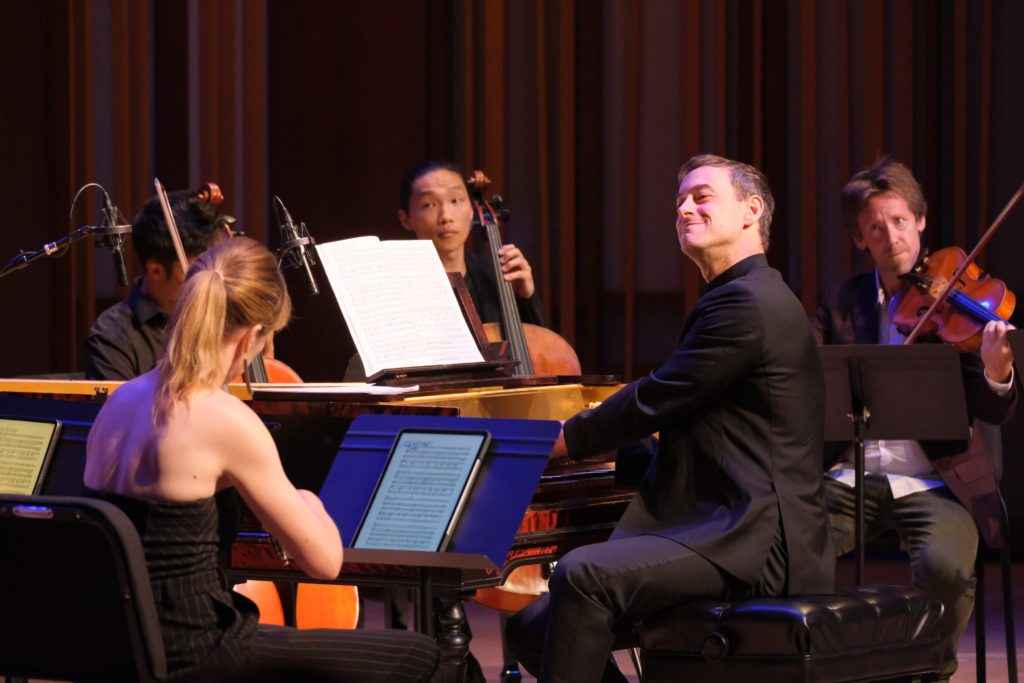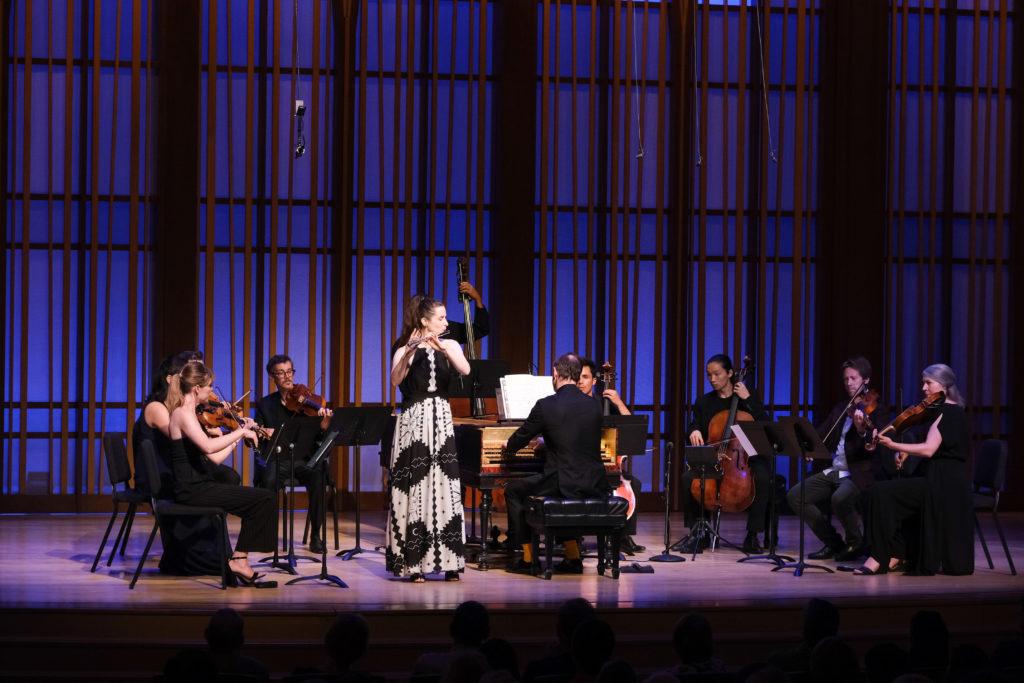La Jolla SummerFest’s Sumptuous Banquet of Baroque Program Music
When I was a college music major—an eon ago it seems—it was popular to value Baroque music because it was absolute music, as opposed to the lesser programmatic music that dominated the 19th Century. Baroque music—the concerto grossi, the preludes and fugues, the trio sonatas—embodied objectivity, while Romantic music wallowed in stories: from Berlioz’ Symphony Fantastique, to Mussorgsky’s Pictures at an Exhibition, to Smetana’s set of six symphonies about Czech history Má vlast, to Ferde Grofé’s Grand Canyon Suite.
We had to admit that early in J.S. Bach’s career, he did write a clever programmatic harpsichord work, the Capriccio ‘On the departure of a beloved brother,’ BWV 992, a piece about his brother’s leaving his family in Germany to join the Swedish military. But we accepted this as a youthful indiscretion made irrelevant by J.S. Bach’s end of life tome The Art of Fugue, a musical compendium of every type of contrapuntal composition imaginable. It is the gold standard of absolute music.
Of course, in my student years, Baroque opera had not returned to North American opera stages, so we were ignorant of this significant component of Baroque music that was most adept at recounting and illustrating stories.
Under the direction of Jonathan Cohen, Friday’s La Jolla SummerFest program, Baroque Fantasia, offered a generous banquet of programmatic Baroque music. From the harpsichord, Cohen conducted a dozen instrumentalists of the SummerFest Baroque Orchestra in works by Georg Philipp Telemann, Henry Purcell, Antonio Vivaldi, and Jean-Féry Rebel.
Telemann’s orchestral Don Quixote Suite recounts tales from the Cervantes novel in seven colorful movements, each described in both title and musical invention. Cohen’s strings delivered with gusto Telemann’s slashing motifs in His Attack on the Windmills; first violinist Tessa Lark coaxed the most delicate motifs in Amorous Sighs over the Princess Dulcinea; Rose Lombardo’s spiky piccolo riffs gave character to Sancho Panza Mocked, and the violins and violas hovered with apt reverence in the finale The Repose of Don Quixote. Telemann’s musical interests knew no boundaries, Although he spent spent most of his long, successful career as Music Director for the major churches in Hamburg, Germany, shortly after arriving in that prosperous city he also served as director of the Hamburg Opera for 16 years.
For a 1692 London production of The Fairy Queen, a semi-opera based on Shakespeare’s play A Midsummer Night’s Dream, Henry Purcell provided the music. Since the dialogue in a semi-opera is spoken, all of Purcell’s contributions are dances, processions, and preludes. Cohen programmed some 14 movements from The Fairy Queen, a resplendent sampling of the composer’s musical invention. I particularly enjoyed the rousing Hornpipes, especially when flutists Emi Ferguson and Rose Lombardo doubled or alternated with the violins and Michael Yeung added a subtle touch of percussion.
Antonio Vivaldi’s Flute Concerto in G Minor, RV 439, La Notte, is unusual because it is a concerto with a program. Vivaldi titled this concerto La Notte (“The Night”) because it describes a nocturnal soundscape: there is a vibrant Presto section the composer marked Fantasmi that depicts scary ghostly apparitions, and another section of the concerto marked Il sonno that depicts sleep by muting the strings and giving the flutist a long, dreamy solo, which soloist Emi Ferguson played with suave, delicate phrasing and a winning sonority. She dispensed the concerto’s ample pyrotechnics with accomplished ease, and her stylish approach deepened the pleasure of experiencing this rarely heard concerto.I admit that prior to this concert, I had never encountered the name or the music of Jean-Féry Rebel, a pupil of Jean-Baptiste Lully who flourished as a composer in the court of Loui XIV. Cohen selected nine movements from Rebel’s 1738 opera-ballet Les éléments, a musical account of the creation of the earth. The suite’s opening movement, titled Chaos is marked by audacious tone-clusters and fearsome tremolandos, an amazingly dramatic avant-garde movement that could have been composed today!
The other movements in this suite are typical French dances of the period and bird calls, notably Rossignols (“Nightingales”), a ravishing duet for the flutists. Rebel’s gorgeous Sicilienne provided another opportunity for Ferguson and Lombardo to flaunt their prowess. A rousing Caprice marked by fervent percussion brought the Suite and the concert to a splendid close.
This concert was presented by the La Jolla Music Society on August 2, 2024, in La Jolla’s Conrad Prebys Performing Arts Center as part of SummerFest 2024.

Ken Herman, a classically trained pianist and organist, has covered music for the San Diego Union, the Los Angeles Times’ San Diego Edition, and for sandiego.com. He has won numerous awards, including first place for Live Performance and Opera Reviews in the 2017, the 2018, and the 2019 Excellence in Journalism Awards competition held by the San Diego Press Club. A Chicago native, he came to San Diego to pursue a graduate degree and stayed.Read more…



Ken, Thanks for another sparkling review. Reading through, it was a fine way to re-experience the adventurous programming and music making.
. . . before we launch into yet another week of SummerFest programs!
Flutes/piccolos: superb.